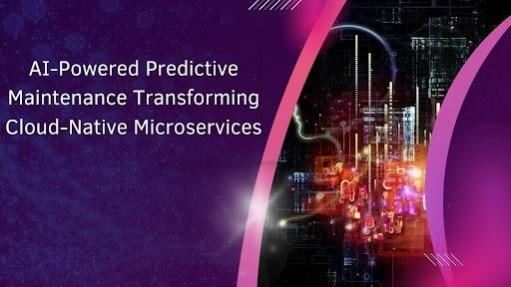
In this digital world, modern cloud infrastructure is rapidly evolving, demanding more efficient maintenance strategies to ensure seamless operations. To address this challenge, Bhaskara Garnimitta introduces an innovative AI-driven predictive maintenance framework that enhances system reliability and operational efficiency. This groundbreaking approach leverages artificial intelligence to revolutionize cloud-native microservices, enabling proactive issue detection and resolution. This article explores his cutting-edge methodology, highlighting AI's transformative role in optimizing cloud infrastructure maintenance.
The Shift to Proactive Maintenance
Traditional maintenance methods often rely on reactive approaches, addressing system issues after failures occur. However, this can lead to prolonged downtime and increased operational costs in complex cloud environments. AI-driven predictive maintenance significantly shifts from this reactive model by anticipating potential failures before they impact system performance.
This framework analyzes key infrastructure metrics such as CPU utilization, memory consumption, network latency, and disk I/O patterns using machine learning algorithms. By identifying subtle performance anomalies, it enables timely interventions, ultimately improving uptime and reducing maintenance expenses.
Leveraging Deep Learning for Failure Prediction
One of the most compelling aspects of this framework is its use of deep learning models trained on historical operational data. Unlike conventional monitoring tools, which often fail to detect early warning signs of failures, AI models can recognize patterns indicative of impending system degradation.
By continuously learning from new data, these models improve their accuracy in predicting failures, making maintenance strategies more effective. This results in a system that minimizes disruptions and optimizes resource utilization, ensuring smoother cloud operations.
Enhancing Cloud Infrastructure with AI Integration
Deploying AI-driven maintenance in cloud environments presents unique challenges, particularly regarding integration. The proposed framework incorporates robust architectural recommendations to facilitate seamless adoption in enterprise settings.
A key feature is the implementation of real-time monitoring systems, which use distributed sensors to track system health continuously. These monitoring agents feed data into the predictive models, allowing them to generate alerts well before potential failures. Automated remediation processes further enhance the system's efficiency, reducing the need for manual interventions.
The Economic Impact of Predictive Maintenance
Beyond technological advancements, AI-powered predictive maintenance offers substantial financial benefits. By optimizing resource allocation and minimizing emergency repair costs, organizations can achieve significant savings. Studies show that this approach reduces the mean time to repair (MTTR) while increasing the mean time between failures (MTBF). Combining predictive analytics with automated response mechanisms enhances efficiency and boosts return on investment, making AI-driven maintenance an economically viable solution for cloud-based enterprises.
Overcoming Implementation Challenges
While AI-driven predictive maintenance offers considerable benefits, its implementation is not without obstacles. Integrating AI into existing cloud infrastructure requires overcoming technical challenges such as data quality issues and compatibility with legacy systems.
To address these concerns, the framework emphasizes the importance of phased deployment strategies. Gradually introducing AI models into maintenance allows for continuous validation and refinement, ensuring optimal performance. Additionally, ongoing model retraining is essential to maintain prediction accuracy as system conditions evolve.
The Future of AI in Cloud Operations
As cloud technology evolves, predictive maintenance will grow more sophisticated with advancements like transfer learning and real-time model adaptation, enhancing AI's ability to manage system health proactively. Future developments will improve AI explainability, making predictive maintenance decisions more transparent. Additionally, integrating IoT devices with AI-driven solutions will offer deeper infrastructure insights, further pushing the boundaries of efficiency, reliability, and overall cloud performance.
In conclusion, Bhaskara Garnimitta's AI-driven predictive maintenance framework significantly advances cloud infrastructure management. By harnessing artificial intelligence to anticipate and prevent system failures, organizations can enhance operational efficiency, reduce costs, and improve service reliability. As AI technology evolves, its impact on cloud-native microservices will become even more crucial, fostering innovation and resilience in modern IT ecosystems.

















